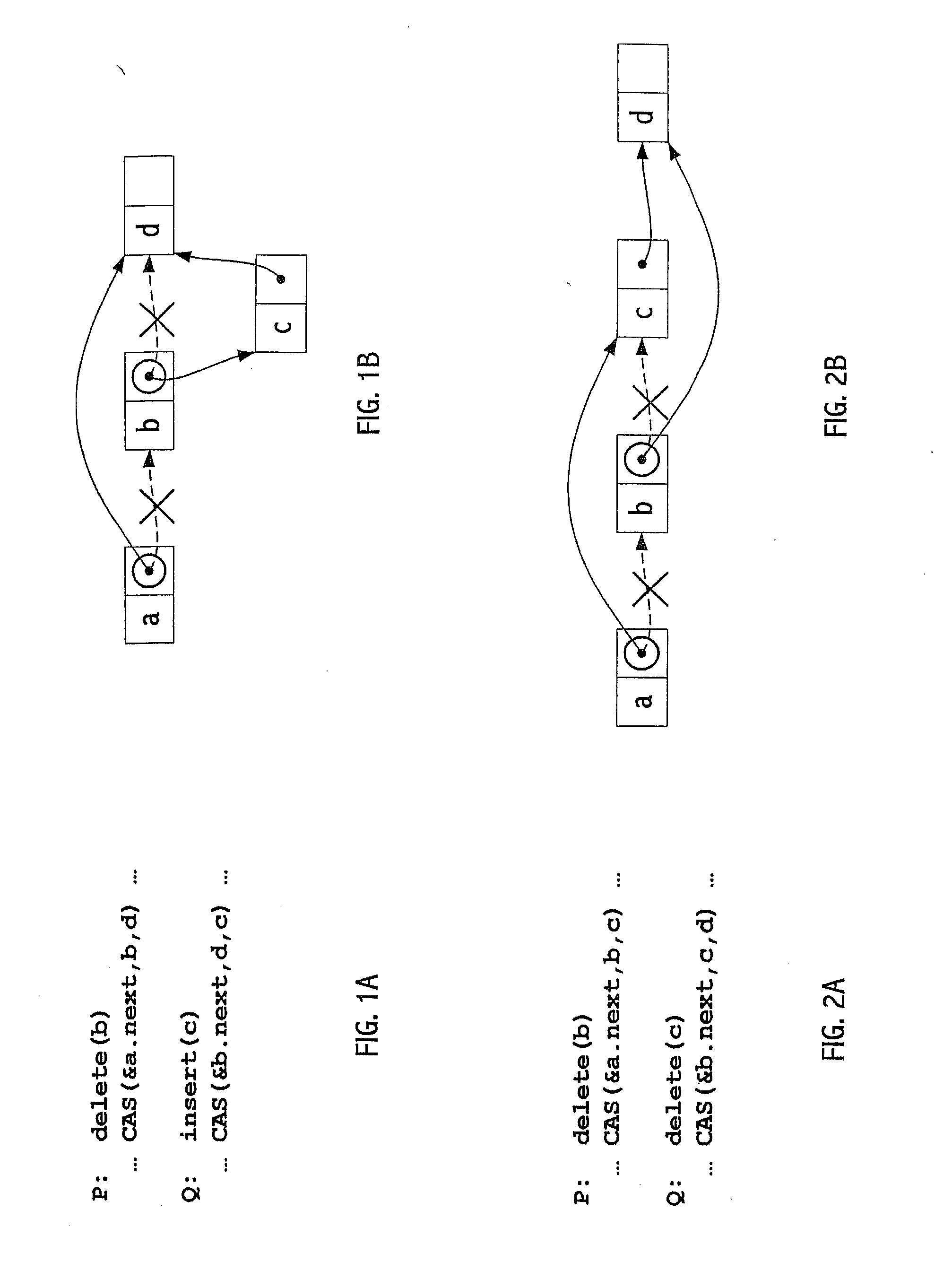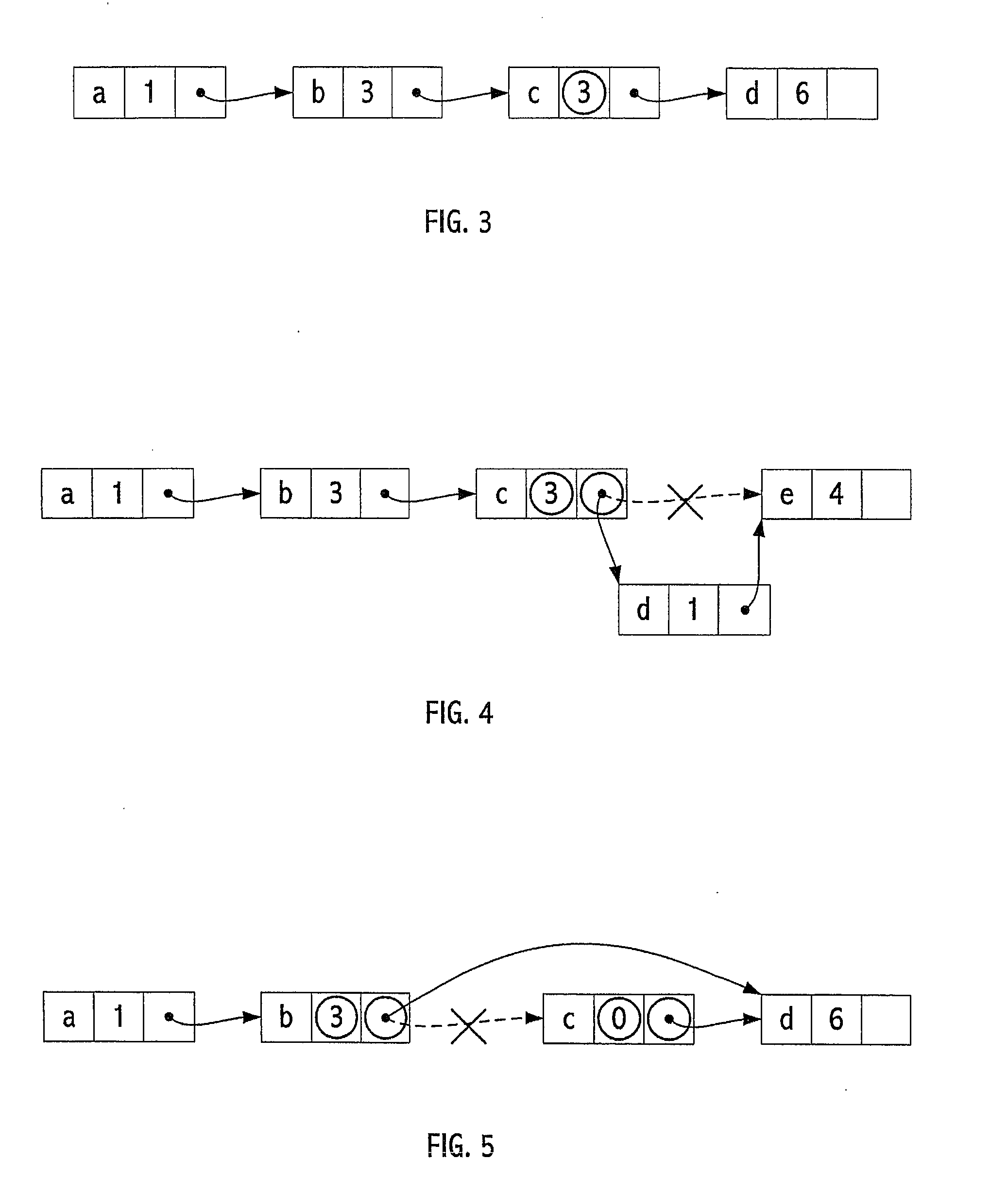Efficient Non-Blocking K-Compare-Single-Swap Operation
a single-swap operation and efficient technology, applied in multi-processor computers, memory adressing/allocation/relocation, instruments, etc., can solve the problems of invariably difficult to extend and generalize, inflexible and general, and typically costly, and achieve efficient and flexible non-blocking manipulations. , the effect of simple non-blocking manipulation
- Summary
- Abstract
- Description
- Claims
- Application Information
AI Technical Summary
Benefits of technology
Problems solved by technology
Method used
Image
Examples
examples presented
[0040] Examples presented in FIGS. 1A and 1B and in FIGS. 1A and 1B illustrate some of the hazards that exist in straight-forward (though ultimately naïve) attempts to implement, using single-location CAS, nonblocking insertion and deletion operations on a simple linked list. The examples are meant to illustrate that CAS-based manipulation of a list is hard. Circled locations indicate the target addresses of CAS operations; crossed out pointers are the values before a CAS succeeds.
[0041] In the example of FIGS. 1A and 1B, process (or thread) P is deletes node b from the list, while process (or thread) Q concurrently attempts to insert node c into the list. FIG. 1A illustrates partial sequences of instructions corresponding to processes P and Q, each including a CAS operation intended to facilitate concurrent access to the list. FIG. 1B illustrates the unintended results of the concurrent access; node c is not inserted in the list, but rather linked from deleted node b. FIGS. 2A and ...
PUM
 Login to View More
Login to View More Abstract
Description
Claims
Application Information
 Login to View More
Login to View More - R&D
- Intellectual Property
- Life Sciences
- Materials
- Tech Scout
- Unparalleled Data Quality
- Higher Quality Content
- 60% Fewer Hallucinations
Browse by: Latest US Patents, China's latest patents, Technical Efficacy Thesaurus, Application Domain, Technology Topic, Popular Technical Reports.
© 2025 PatSnap. All rights reserved.Legal|Privacy policy|Modern Slavery Act Transparency Statement|Sitemap|About US| Contact US: help@patsnap.com



